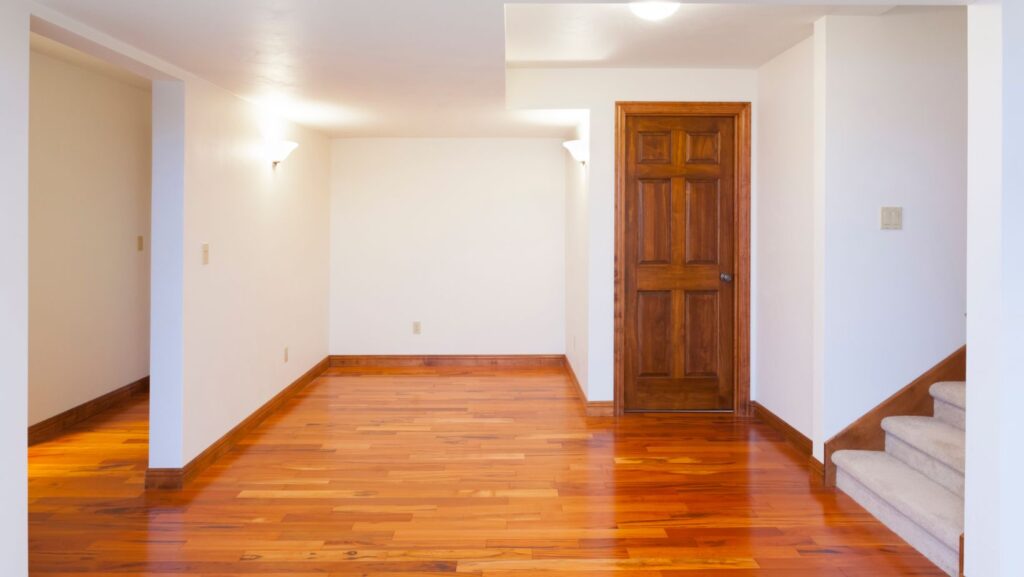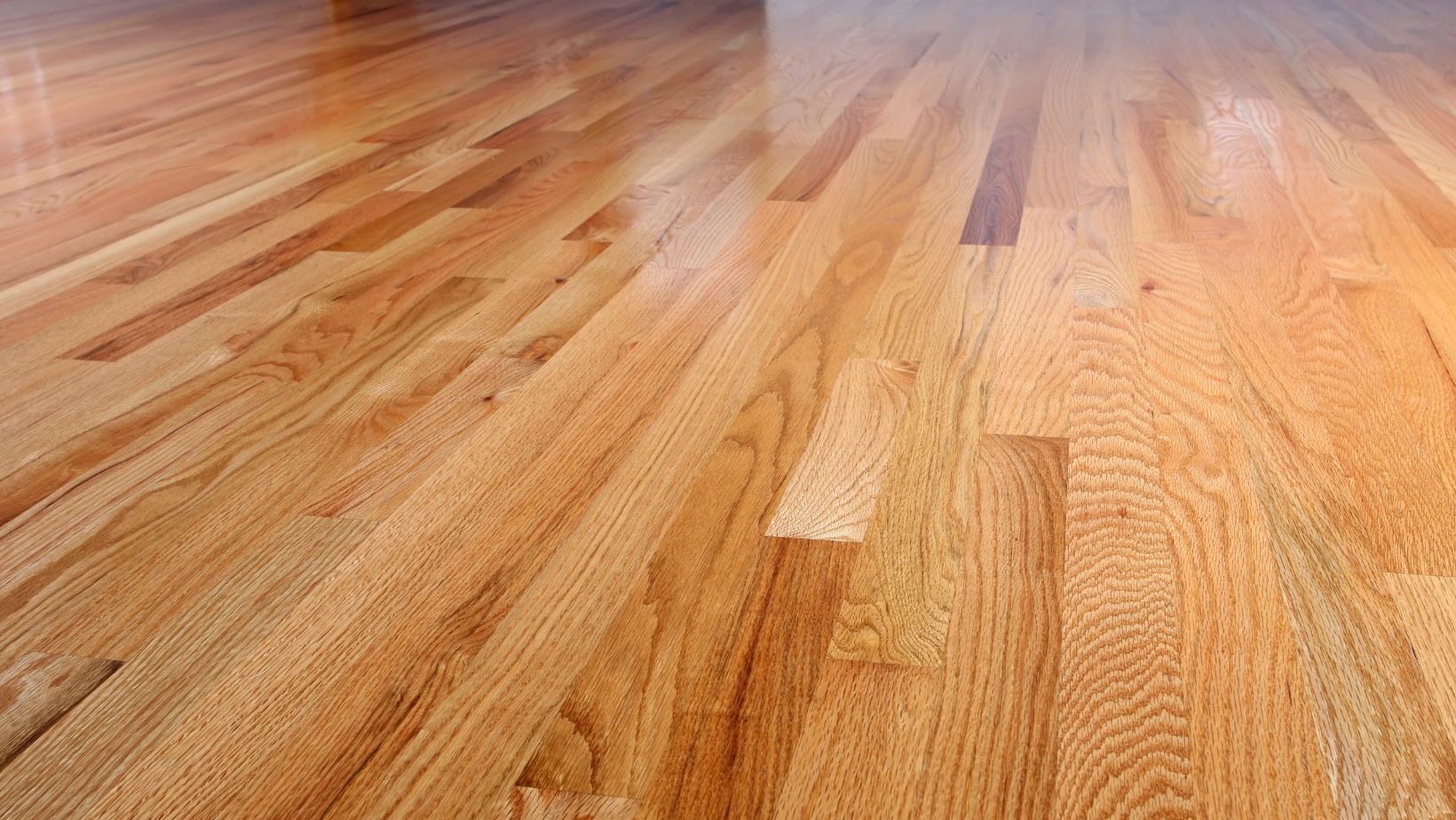
Wood floor refinishing is a crucial process that revitalizes and restores the beauty of your flooring. Over time, your floors can become dull, scratched, and worn-out due to daily wear and tear. Refinishing involves sanding down the top layer of the wood and applying a fresh coat of finish to bring back its original luster. This not only enhances the appearance of your home but also extends the life of your floors. Proper wood floor refinishing can make a significant difference in maintaining your home’s aesthetic appeal and value.
Refinishing Floors With Furniture in the Room
Refinishing floors without moving all your furniture is a possibility, but it comes with certain limitations and challenges. The primary concern is that leaving furniture in place can restrict access to the entire floor area, making it difficult to achieve a uniform finish. However, with careful planning and strategic furniture placement, you can still accomplish a successful refinishing project. Hiring an experienced wood floor refinishing company can help ensure that the work is done efficiently, even in partially furnished spaces.
One option is to work on one section of the room at a time. By moving furniture to one side of the room, you can refinish the exposed area before shifting the furniture to the completed side. This approach allows you to maintain a functional living space while completing the refinishing process. Although it may take longer than refinishing an empty room, it can be a practical solution for those unable to move large pieces of furniture.
Another strategy is to use protective coverings to shield your furniture from dust and debris during the refinishing process. Plastic sheeting or drop cloths can be used to cover furniture, reducing the risk of damage while allowing you to work around it. This method requires careful preparation and attention to detail, ensuring that no areas are overlooked and that the finish is applied evenly.
Pros and Cons of Refinishing Floors with Furniture in Place
Pros:
- Convenience: The most significant advantage of refinishing floors without moving furniture is the convenience it offers. You can maintain your daily routine without the need to store or relocate heavy furniture.
- Cost-Effective: By avoiding the cost of hiring movers or renting storage space, you can save money on your refinishing project. This can be particularly beneficial for budget-conscious homeowners.
- Time-Saving: Moving furniture can be time-consuming, especially if you have a large home. Refinishing floors with furniture in place can shorten the overall project timeline.
Cons:
- Limited Access: Having furniture in place can limit your access to certain areas of the floor, potentially resulting in an uneven finish. Careful planning and execution are necessary to avoid this issue.
- Risk of Damage: There is always a risk of damaging furniture during the refinishing process. Dust, debris, and accidental spills of finishing products can harm your belongings if not adequately protected.
- Extended Project Duration: While it may save time initially, working around furniture can extend the overall project duration. Shifting furniture between sections can be labor-intensive and may require multiple refinishing sessions.
Preparation Steps for Refinishing with Minimal Furniture Movement
Proper preparation is crucial when refinishing floors with minimal furniture movement. Here are some steps to ensure a successful project:
- Plan Your Layout: Divide your room into sections and plan the sequence in which you will refinish each area. This allows you to strategically move furniture and maintain a functional living space throughout the project.
- Protect Your Furniture: Use protective coverings, such as plastic sheeting or drop cloths, to shield your furniture from dust and potential damage. Ensure the coverings are secure and will not shift during the refinishing process.
- Gather Necessary Tools: Ensure you have all the tools and products needed for refinishing, including sanders, brushes, and finishing products. Having everything on hand will streamline the process and minimize disruptions.
- Clean Thoroughly: Before starting, clean your floors thoroughly to remove any dirt or debris. This will ensure a smooth surface for sanding and help achieve a better finish.
- Communicate with Family Members: If you live with others, communicate your plan to ensure everyone is prepared for the temporary changes. This can help avoid accidents and ensure the project runs smoothly.
Tools and Products Needed for Wood Floor Refinishing
The right tools and products are essential for a successful wood floor refinishing project. Here is a list of essential items you will need:
Tools:
- Floor Sander: A professional-grade sander is crucial for removing the old finish and smoothing the wood surface.
- Edger: Used to sand corners and edges that the floor sander cannot reach.
- Vacuum Cleaner: Required for cleaning up dust and debris during and after sanding.
- Paintbrushes and Rollers: For applying stains and finishes evenly across the floor.
- Protective Equipment: Dust masks, goggles, and ear protection to ensure safety during the process.
Products:
- Wood Stain: Choose a stain that complements your home’s decor and enhances the wood’s natural beauty.
- Wood Finish: A durable finish is necessary to protect the wood and add shine. Options include polyurethane, oil-based, and water-based finishes.
- Wood Filler: For filling any cracks, holes, or imperfections in the wood before staining.
Having the right tools and products will not only make the process smoother but also ensure a professional-looking finish. Investing in high-quality materials is crucial for achieving long-lasting results.
Alternative Options: Refinishing vs. Replacement
When considering wood floor refinishing, it’s essential to weigh the alternatives, such as replacing the flooring entirely. Both options have their advantages and drawbacks, depending on your specific needs and circumstances.
Refinishing:
- Pros:
- Cost-Effective: Refinishing is generally more affordable than installing new flooring.
- Preserves Original Flooring: If your floors have historical or sentimental value, refinishing allows you to maintain their original charm.
- Less Disruptive: Refinishing can be completed in a shorter time frame compared to a full replacement.
- Cons:
- Not Always Possible: Severely damaged floors may not be salvageable through refinishing alone.
- Labour-Intensive: The process requires significant time and effort, especially if working around furniture.
Replacement:
- Pros:
- Complete Transformation: New flooring can dramatically change the look and feel of your home.
- Modern Options: You can choose from a wide range of materials and styles to suit your preferences.
- Increased Durability: Modern flooring materials may offer enhanced durability and longevity.
- Cons:
- Higher Cost: Replacing flooring is typically more expensive than refinishing.
- More Disruptive: The installation process can be time-consuming and may require temporary relocation.
Ultimately, the decision between refinishing and replacement depends on your budget, the condition of your floors, and your long-term goals. Refinishing is often the preferred choice for those looking to preserve their existing flooring while enhancing its appearance.
Summary
Deciding whether to refinish your floors with furniture in place or opt for complete replacement involves careful consideration of your specific circumstances. Both options have their own set of benefits and challenges. Refinishing with minimal furniture movement can be a practical and cost-effective solution, provided you plan meticulously and take necessary precautions to protect your belongings. Whether you choose to refinish or replace, the key is to make an informed decision that aligns with your needs, budget, and lifestyle.













